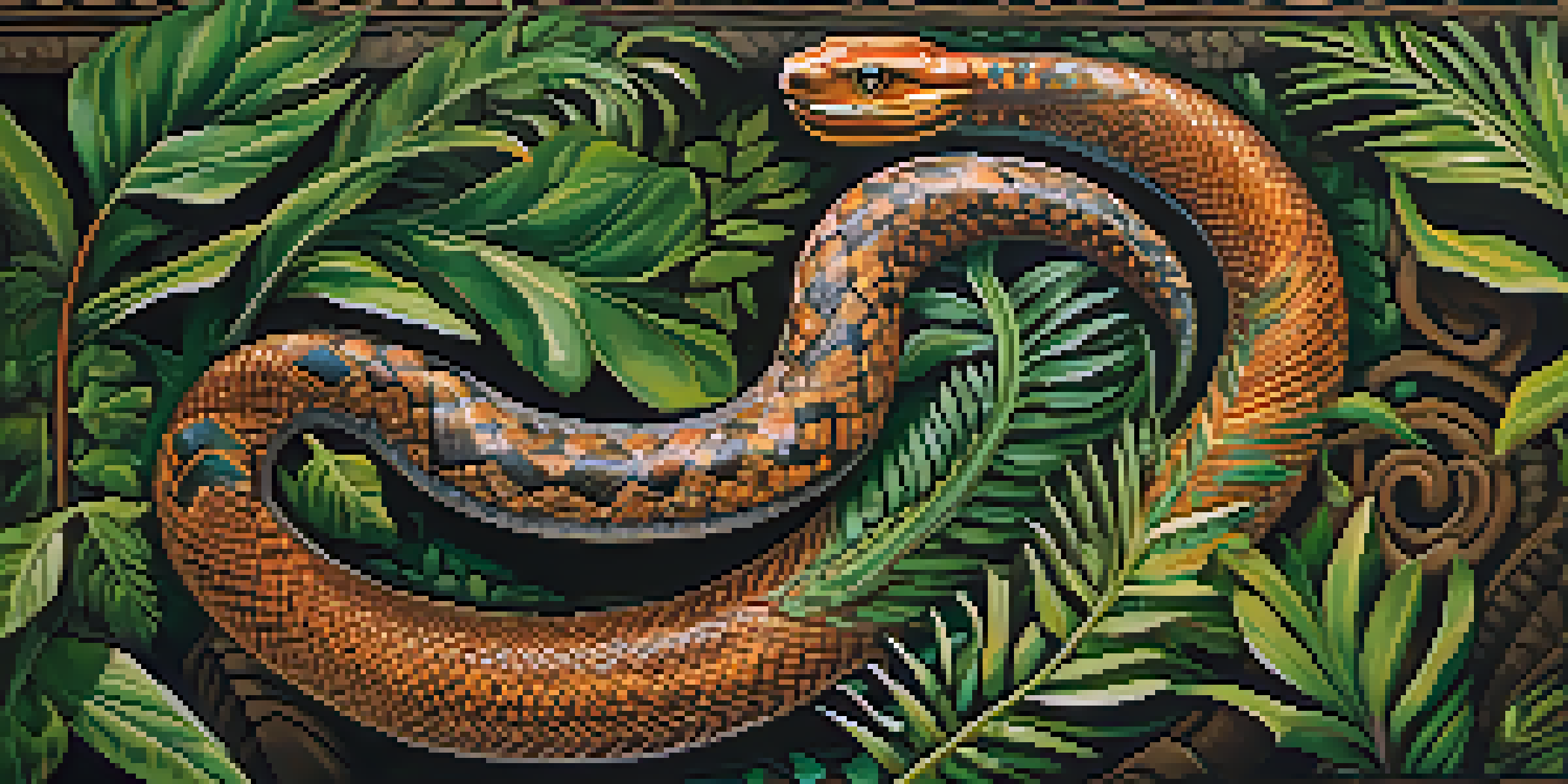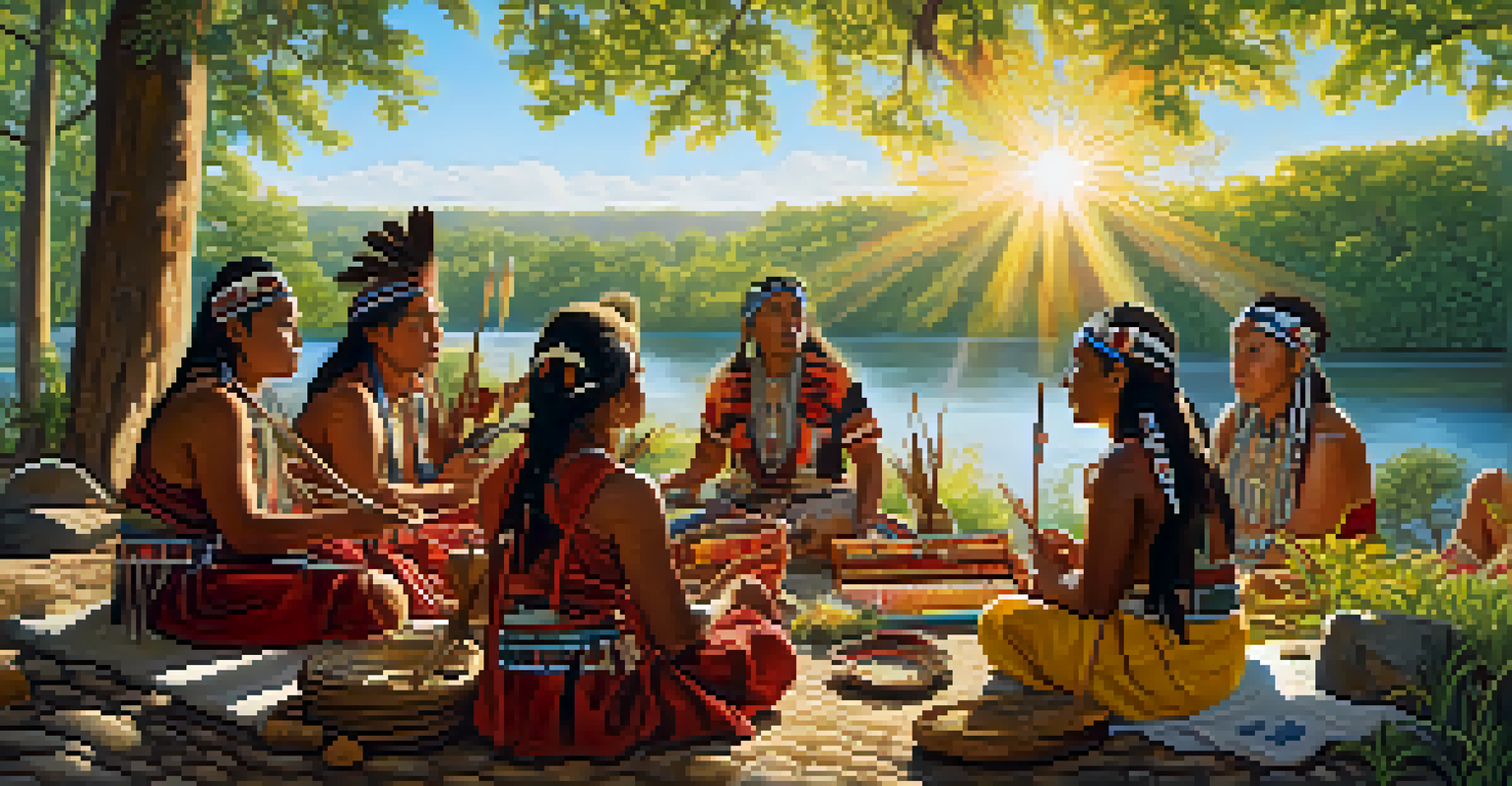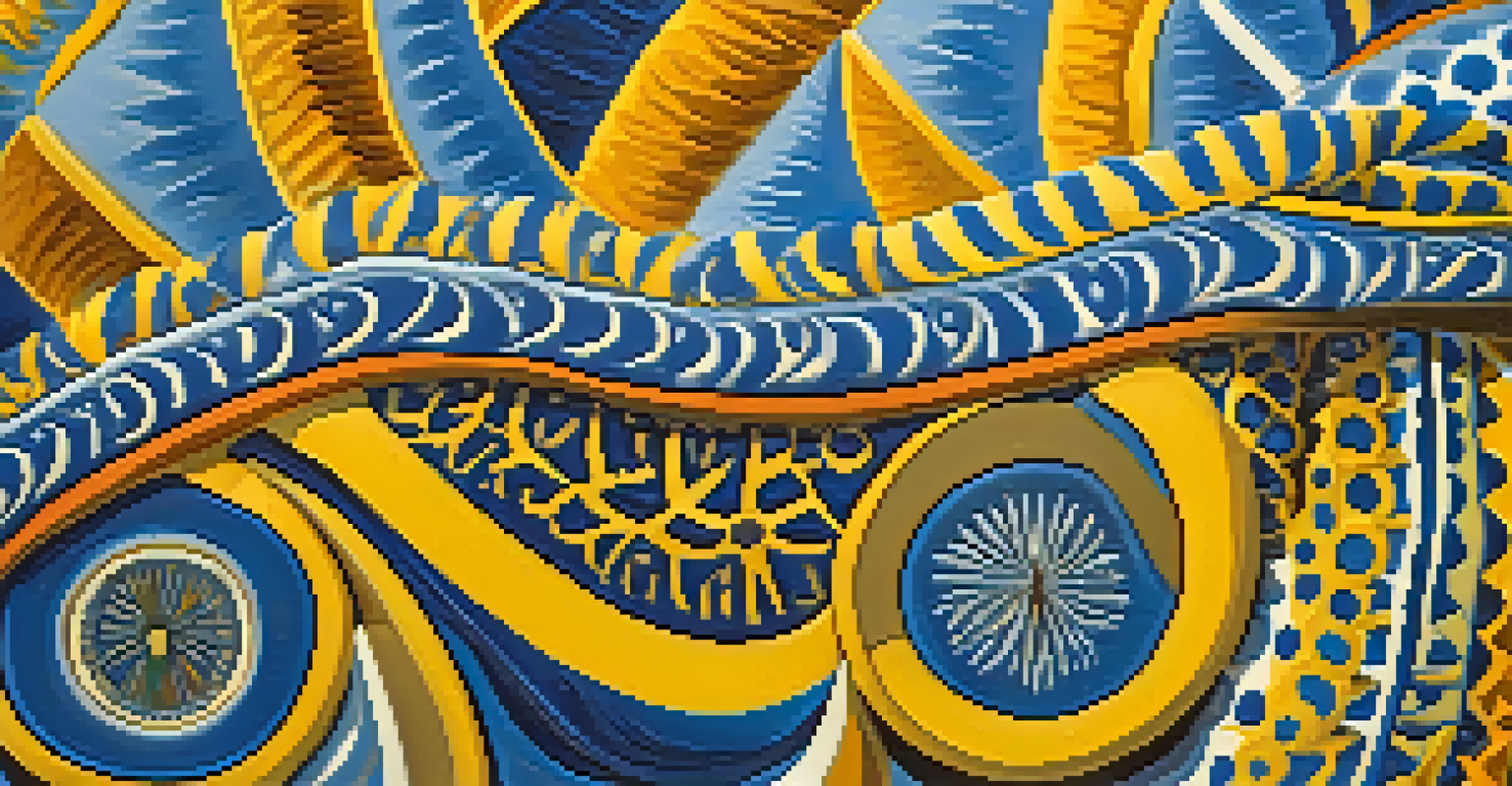Indigenous Art Forms: Spirituality in Tribal Painting

Understanding Indigenous Art and Its Spiritual Roots
Indigenous art is not just about aesthetic appeal; it is deeply rooted in the spirituality of tribal cultures. Each piece of art serves as a visual expression of the beliefs, stories, and traditions of Indigenous peoples. The connection between the artist and their culture is profoundly spiritual, as the artwork often tells tales of creation, ancestors, and the natural world.
Art is the most beautiful of all lies.
For many Indigenous communities, art is a way to communicate with the spiritual realm. The symbols and patterns used in tribal painting often represent spiritual beliefs and significant events, bridging the gap between the physical and metaphysical worlds. This connection highlights how art is a vital part of preserving their identity and heritage.
Furthermore, Indigenous artists use traditional techniques passed down through generations, reinforcing their connection to the past. This continuity of knowledge and practice reflects a deep respect for their ancestors and the spiritual teachings they left behind.
The Role of Nature in Indigenous Tribal Painting
Nature plays a crucial role in Indigenous art, serving as both inspiration and subject matter. Many tribal paintings depict elements of the landscape, animals, and plants that hold spiritual significance. For instance, a painting featuring a serpent may symbolize life and regeneration, while a depiction of a tree might represent connection to ancestors and the earth.

Indigenous artists often emphasize the interconnectedness of all living things, reflecting the belief that humans are just one part of a larger ecosystem. This perspective is not only spiritual but also encourages a sense of responsibility toward nature, promoting conservation and respect for the environment.
Art as a Spiritual Expression
Indigenous art serves as a visual representation of spiritual beliefs, cultural stories, and ancestral connections.
As viewers, understanding the significance of these natural elements can deepen our appreciation of the artwork. It invites us to see beyond the colors and shapes, urging us to recognize the spiritual stories embedded within each brushstroke.
Symbolism in Tribal Paintings: A Language of Its Own
Symbolism is at the heart of Indigenous tribal painting, acting as a unique language that conveys complex ideas and emotions. Each symbol has its own meaning, often tied to cultural stories or spiritual beliefs. For example, circles may represent unity and the cycle of life, while zigzag patterns can signify water and its life-giving properties.
The artist is not a special kind of person; rather, each person is a special kind of artist.
This rich tapestry of symbols allows Indigenous artists to communicate profound spiritual messages without the need for words. The viewer is invited to engage with the artwork, interpreting the symbols in their own way while also respecting the artist's intent. It's a reminder that art can transcend language barriers and speak to our shared human experience.
Moreover, the use of symbolism contributes to the uniqueness of each tribal style. Different tribes may have specific symbols that are distinct to their culture, reinforcing their identity while celebrating their spirituality through art.
Ceremonial Contexts: Art as a Spiritual Practice
Many Indigenous artworks are created for specific ceremonial purposes, further intertwining art with spirituality. These ceremonies often mark significant life events, such as birth, initiation, or healing, and the artwork plays a vital role in these rituals. For instance, a painting may serve as a backdrop for a dance, infusing the event with spiritual energy.
In these contexts, art becomes a medium through which the community connects with their spirituality. The act of creating and displaying art during ceremonies reinforces communal bonds and shared beliefs. It emphasizes the idea that art is not just an individual endeavor but a collective celebration of culture and spirituality.
Nature's Role in Tribal Art
Nature inspires Indigenous art, emphasizing the interconnectedness of all living things and the spiritual significance of natural elements.
This ceremonial aspect also highlights the importance of context in understanding Indigenous art. Viewing a piece of art outside its intended setting can diminish its significance, as the layers of meaning are often tied to specific rituals and practices.
Preservation of Indigenous Spirituality Through Art
As modern influences seep into Indigenous communities, the preservation of spirituality through art becomes increasingly vital. Many artists strive to keep traditional practices alive by incorporating ancestral techniques and themes into their work. This intentionality not only honors their heritage but also ensures future generations can connect with their cultural roots.
Additionally, Indigenous art has gained recognition on global platforms, allowing artists to share their spiritual narratives with a wider audience. This exposure can foster greater understanding and appreciation for Indigenous cultures, while also empowering artists to take pride in their identities.
However, it is crucial that this sharing is done respectfully and ethically. The authenticity of Indigenous spirituality must be preserved, ensuring that the art remains a true reflection of their beliefs rather than being commodified.
Challenges Faced by Indigenous Artists Today
Despite the richness of Indigenous art, artists face numerous challenges in today's world. One significant issue is the appropriation of their art by non-Indigenous individuals or companies, which can dilute its meaning and exploit its cultural significance. This appropriation often comes without understanding or respect for the underlying spiritual beliefs.
Moreover, many Indigenous artists struggle with gaining access to resources and platforms to share their work. Financial barriers and limited visibility can hinder their ability to express their spirituality through art, making it difficult for them to thrive as artists.
Challenges for Indigenous Artists
Many Indigenous artists face appropriation, resource access issues, and the need for ethical representation of their cultural narratives.
Addressing these challenges requires a collective effort to support Indigenous voices and recognize the importance of their art. By valuing and promoting Indigenous artists, we can help ensure their spiritual stories are told authentically and celebrated.
The Future of Indigenous Art and Spirituality
Looking ahead, the future of Indigenous art and spirituality is both hopeful and dynamic. Many young Indigenous artists are emerging, blending traditional practices with contemporary styles to create innovative works. This fusion allows them to express their spirituality in new ways while keeping their cultural heritage alive.
Additionally, technology is playing a vital role in the evolution of Indigenous art. Artists are using digital platforms to reach audiences around the world, sharing their spiritual narratives through online galleries and social media. This accessibility can help build a global community that appreciates and respects Indigenous cultures.

Ultimately, the future of Indigenous art is about resilience and adaptation. As artists continue to navigate the complexities of modern life, their spiritual expressions will likely evolve, reflecting both their traditions and the contemporary world in which they live.